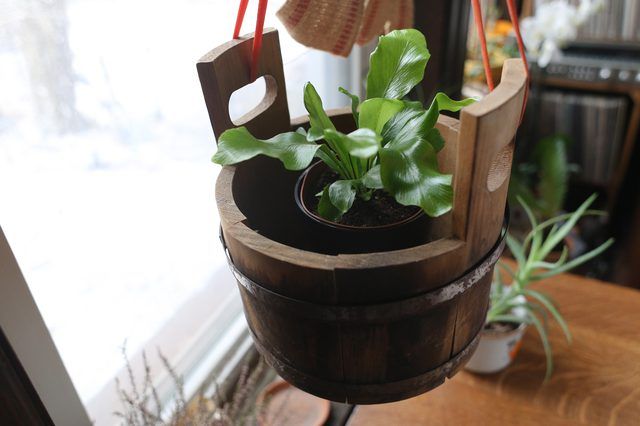Bulbs
Flower Basics
Flower Beds & Specialty Gardens
Flower Garden
Garden Furniture
Garden Gnomes
Garden Seeds
Garden Sheds
Garden Statues
Garden Tools & Supplies
Gardening Basics
Green & Organic
Groundcovers & Vines
Growing Annuals
Growing Basil
Growing Beans
Growing Berries
Growing Blueberries
Growing Cactus
Growing Corn
Growing Cotton
Growing Edibles
Growing Flowers
Growing Garlic
Growing Grapes
Growing Grass
Growing Herbs
Growing Jasmine
Growing Mint
Growing Mushrooms
Orchids
Growing Peanuts
Growing Perennials
Growing Plants
Growing Rosemary
Growing Roses
Growing Strawberries
Growing Sunflowers
Growing Thyme
Growing Tomatoes
Growing Tulips
Growing Vegetables
Herb Basics
Herb Garden
Indoor Growing
Landscaping Basics
Landscaping Patios
Landscaping Plants
Landscaping Shrubs
Landscaping Trees
Landscaping Walks & Pathways
Lawn Basics
Lawn Maintenance
Lawn Mowers
Lawn Ornaments
Lawn Planting
Lawn Tools
Outdoor Growing
Overall Landscape Planning
Pests, Weeds & Problems
Plant Basics
Rock Garden
Rose Garden
Shrubs
Soil
Specialty Gardens
Trees
Vegetable Garden
Yard Maintenance
How to Grow Bird's Nest Fern Houseplants
How to Grow Bird's Nest Fern Houseplants. Bird's nest fern (Asplenium nidus) earned its name with the whorled habit of its foliage, which resembles a bird nest. It performs well outdoors within U.S. Department of Agriculture plant hardiness zones 9 to 12, but is more commonly grown as a potted houseplant. Bird's nest ferns are largely...
Bird's nest fern (Asplenium nidus) earned its name with the whorled habit of its foliage, which resembles a bird nest. It performs well outdoors within U.S. Department of Agriculture plant hardiness zones 9 to 12, but is more commonly grown as a potted houseplant. Bird's nest ferns are largely self-sufficient and suffer few serious problems. However, they will look better and live a longer, healthier life if their growing needs are met.
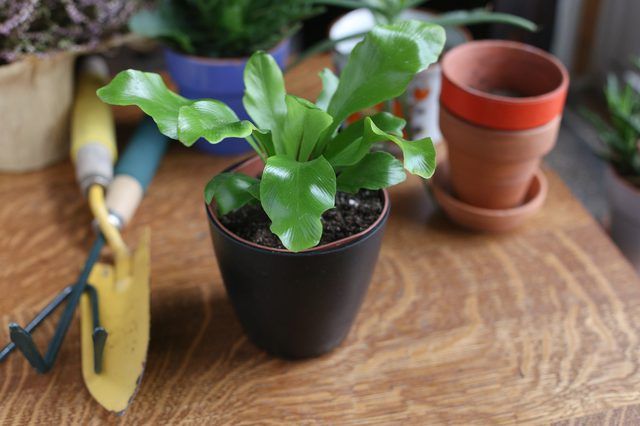
Growing bird's nest ferns as houseplants is simpler than outdoor cultivation because their growing conditions can be more easily controlled. Pot them in a planter with multiple drainage holes around the base. Use a peaty, fast-draining potting mix such as 1 part potting soil, 1 part milled peat moss and 1 part sand mixture made up of equal parts gravel, sand and charcoal. Bright, filtered light is best for bird's nest ferns, so position them within 3 feet of a north-facing window. Eastern and western-facing windows are also suitable, but they must be covered with a sheer curtain or partly shaded from outdoors to limit the amount of direct sun the bird's nest fern receives. Too much sun causes the fronds to become brown and dry.
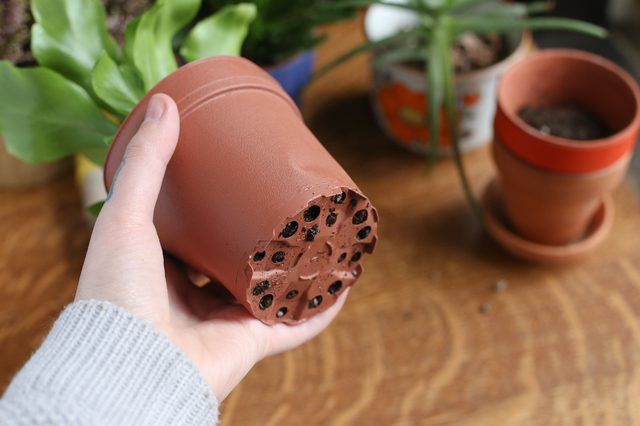
Soil moisture is among the most important aspects of growing bird's nest ferns, indoors or out. They need consistently moist soil, but it must be allowed to dry out slightly on the surface to prevent root problems. Probe the soil with your fingertip every other day and water when it feels nearly dry just beneath the surface. Water deeply, saturating the soil until the excess moisture begins to trickle from the base of the pot. Bird's nest ferns suffer damage if allowed to dry out too much, so watch for signs of wilting during hot, dry weather and provide extra water if the soil feels drier than normal. Reduce watering by half in winter, providing just enough moisture to keep the soil from drying out completely.
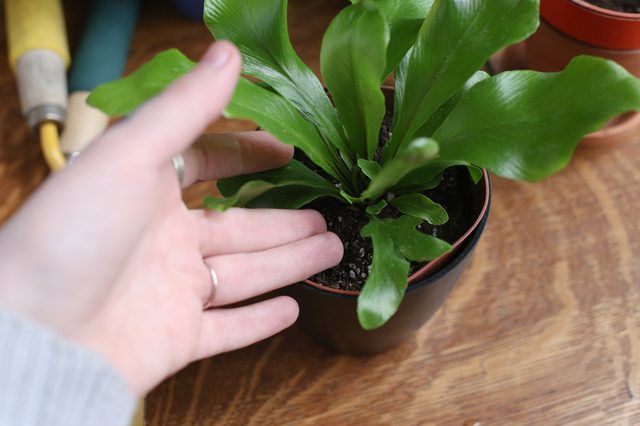
Low humidity takes a toll on bird's nest ferns, causing stress and slow growth. They perform best when humidity levels stay above 40- to 50-percent, which can be difficult to achieve and maintain indoors. Grow the bird's nest fern in a location with naturally high humidity such as the kitchen or bathroom, or place them on a shallow tray filled with wet pebbles, which will raise humidity levels around the foliage. Misting is another option to keep the foliage hydrated. However, be sure to use rain water or freshly boiled and cooled tap water because bird's nest fern foliage is sensitive to the chlorine, fluoride and other chemicals found in fresh tap water.
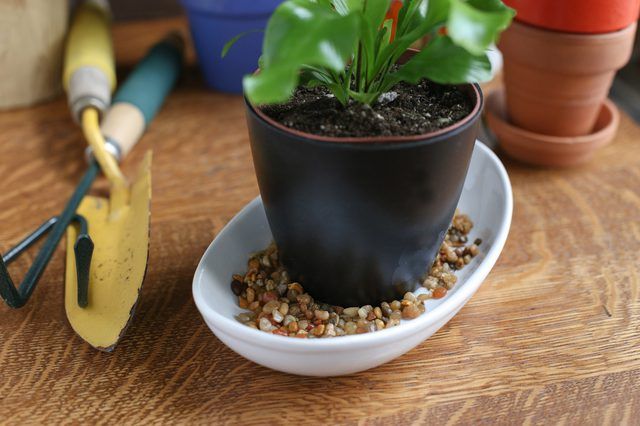
Bird's nest ferns perform well without supplemental fertilizer if potted in suitably rich, acidic soil. However, those grown under high-light conditions benefit from monthly feeding with dilute, liquid fertilizer to support their growth. Use fertilizer with an N-P-K analysis no higher than 15-15-15, which is a balanced or general purpose type of fertilizer. Dissolve 1/2 teaspoon with 1 gallon of water and apply the solution to pre-moistened soil every month from spring until early autumn. Stop feeding from early autumn until early spring to allow the bird's nest fern to enter dormancy for the winter.
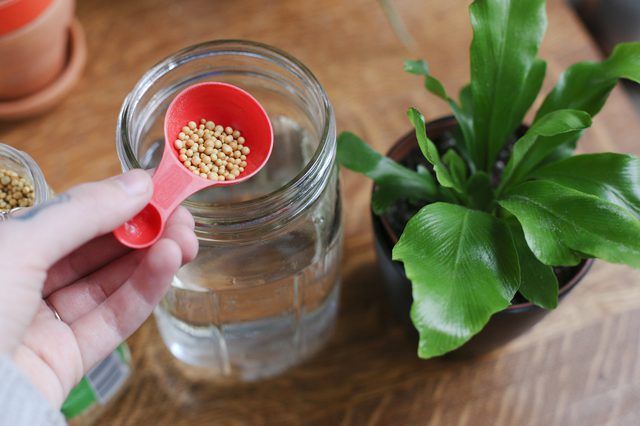
Bird's nest ferns are among the best fern species for indoor cultivation. However, they are prone to foliage damage from physical contact. A hanging basket or pedestal away from normal foot traffic will help keep bird's nest ferns out of harm's way, although their fronds may still suffer damage if allowed to rest against any nearby surface. Growing bird's nest ferns in a terrarium is another option for indoor cultivation. It will shield the plant from damage while providing a naturally high level of ambient humidity. However, terrarium cultivation may restrict the plant's growth.
